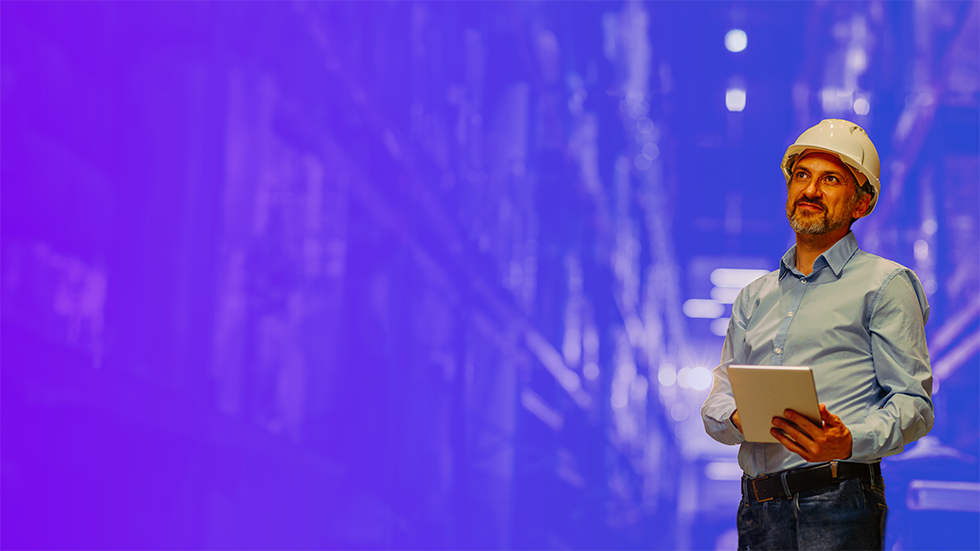Six supply chain trends to watch in 2025
From cost management to risk mitigation, Scope 3 to new technology, 2025 is expected to present plenty for supply chain leaders to manage.

After several years of building supply chain resilience and visibility, supply chain leaders must now deliver genuine value to the overall business. In 2025, achieving this broader impact will likely require leaders to get very granular about the supply chain’s cost-to-serve, to deeply understand the environmental and social practices of their suppliers, and to pragmatically assess how their technology is delivering on these needs.
In addition, supply chain leaders will need to look up and out, being aware of the uncertainty around geopolitical issues, how emerging technology could bring profoundly change, and how industry transformations will require new operational and workforce approaches. Here, we dive into six key trends for 2025 in more detail.
1. Cost-to-serve
In 2025, organizations should turn to the supply chain to help reduce costs to mitigate the impacts of inflation and global instability. However, with traditional margin improvement methods exhausted, supply chain leaders will need to assess cost-to-serve at a granular level. This will require understanding of the cost implications of different products, customers, and channels, the costs of each supply chain node and facility, and costs of each pathway and ship-to location. This clarity can enable the adoption of pricing strategies that reflect the true cost of service, highlight alternative product flows and ship-to strategies, and provide great insight to flex other supply chain costs to adapt to disruptions.
To support this deep understanding of costs, supply chain leaders will need to make the most of advanced analytics, artificial intelligence (AI), and machine learning (ML). They will need to embrace technology that facilitates monitoring, alerting, and predictive analysis, empowering them to adopt a near real-time and proactive approach.
2. Supply chain risk management
CEOs see the supply chain as a top 3 risk to business (according to the KPMG 2024 CEO Outlook survey). Therefore, in the year ahead, supply chain risk management will need dedication amid increasing geopolitical challenges, inflationary pressures, and ongoing supply chain disruptions. Leaders will need to focus on the risks of new sustainability and environmental regulations, and be ready for new trade and tariff policies. There will likely also be risks aligned to generative artificial intelligence (Gen AI) tools, for example, stricter privacy and data management requirements.
Changing consumer preferences will also present risk, such as demand for faster delivery, higher customization, and ethical sourcing. Further, labor shortage risks will need consideration, particularly in warehousing, transport, and manufacturing. Cybersecurity threats are expected to grow across all areas of business, with weak spots in the supply chain a key point of entry for threat actors.
To mitigate these risks, supply chain leaders will need to embrace new, predictive, and prescriptive technologies. It will likely be vital to leverage big data for insights, and to work collaboratively with ecosystem partners to share knowledge. Extended visibility deep into the supply chain will remain fundamental, with the need to map supply chains to Tier 4 and beyond. Supply chain leaders should use Digital Twin technology to enhance visualization of the full value chain and build control of their network footprint.
3. ESG/Scope 3
In recent years, environmental, social and governance (ESG) requirements put immense demands on supply chain leaders, as the supply chain is a key avenue to meet organizational ESG targets and Scope 3 expectations. This responsibility is set to continue in 2025, but with even more on the agenda.
To begin, supply chain leaders will need to ensure they have a comprehensive understanding of the entire value chain. Leaders will need to identify, capture, and validate data on partners for ESG awareness, risk mitigation, and reporting. There will likely be demand to improve the human rights and other social implications of the supply chain, while also navigating the complex landscape of ESG-related regulations, such as the Carbon Border Adjustment Mechanism (CBAM), and the Corporate Sustainability Due Diligence Directive (CSDDD).
In 2025, there will also be expectations that supply chain leaders will turn ESG and Scope 3 challenges into opportunities for stronger business performance, and to be a competitive differentiator. Further, they will need to create a more circular economy, exploring how products can be returned, recycled or re-invented, so that the business takes more responsibility for the entire product lifecycle.
4. Generative AI
With AI, blockchain, and the Internet of Things (IoT) now integral to the supply chain, and Virtual Reality (VR) and Digital Twins increasing in prominence, leaders will need to keep leveraging these capabilities while looking at what’s on the tech horizon.
Front and center is Gen AI, presenting immense potential to take the supply chain to the next level during 2025. Gen AI’s ability to draw on vast data sets, rapidly create content, and to self-learn could streamline tasks in procurement, category management, strategic sourcing, contract lifecycle management, supplier risk and relationship management, and requisition-to-receive and invoice-to-pay processes. While much of this has been in the experimental phase, in 2025, supply chain leaders may start to gain genuine value from their Gen AI investments.
5. Intake and orchestration technologies
When it comes to procurement technology, leaders will likely come across new intake and orchestration (I&O) tech tools in 2025. Intake tools sit in front of existing applications, providing a simple way of capturing essential data, while orchestration tools sit above existing applications, enabling process workflow across multiple solutions.
Large enterprise software solutions are being challenged by these new tools, as they offer more flexibility, shorter implementation times, and simpler user experiences. Many organizations are looking at what is possible with I&O tools before replacing legacy procurement technologies.
It is likely that in response to these new tools, the largest Source-to-Pay platforms will release their own I&O functionality by mid-2025. It’s also likely that new partnerships will form between these large platforms and boutique I&O solutions.
6. Industry transformation
Industry transformation has been in motion for some time, driven by the energy transition agenda, advanced technology and robotics, and rapid product innovations for some. This environment has led to the need for large scale operational change, requiring new skills, and changing workforce needs.
In 2025, industry transformation will likely require supply chain and procurement personnel to adapt even more to new technologies and be ready to upskill and reskill. Facilitating new responsibilities for supply chain roles, such as transport and logistics managers, category managers, spend analysts, and data and AI modelers, will likely become increasingly important for success.
With more organizations embracing hybrid working models for their employees, many are considering opening Global Capability Centers (GCCs) or Centers of Excellence (CoEs) to deliver supply chain and procurement functions efficiently. In 2025, this decentralized approach could help leverage global talent pools and foster innovation and productivity.
Getting ready
As supply chain leaders head into 2025, these six trends are expected to be driving agendas and will likely require new ways of thinking, planning, and collaboration. Across cost, risk, technology, ESG requirements, and operations, there will be little time to waste. If you would like support in your supply chain strategy and transformation in 2025, KPMG professionals are here to help.
Take a deeper dive into our supply chain insights
What sets apart good from great supply chain leaders? It's their ability to identify not only broad but also deeper opportunities for enhanced visibility and better decision-making.

Navigate supply chain disruptions with integrated AI planning
Integrated AI planning equips your supply chain with visibility, transparency, and more.

Supply Chain @ KPMG
Tune in to our discussions with industry leaders on navigating the intricate supply chain landscape.

AI-powered insights for your supply chain challenges
Enhance, streamline, and safeguard your end-to-end supply chain operations with our strategic insights powered by AI.
How KPMG Supply Chain Services can help
KPMG offers a technology-enabled planning transformation journey supported by a proven six-layer operating model that ensures accurate segmentation analysis and includes a demand plan and a data assessment. We offer an AI portfolio, a set of algorithms for supply chains, from augmenting your workforce and optimizing costs to making inventory management more efficient and assisting regulatory compliance. Let KPMG guide, accelerate, and de-risk your supply chain with purpose-built assets and accelerators designed exclusively for supply chain operations.
Subscribe to Real Insights for Operations
Sign up to receive newsletters on KPMG's latest research, analysis, news and events to help operations executives innovate.
Meet the team
From supply chain planning strategists to AI experts, our people have the expertise and technology to guide your supply chain through challenges and equip you to make the most of opportunities.



